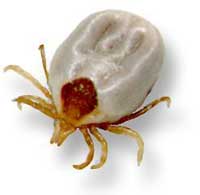Tick Toxicity in Cats
With the onset of Spring comes the onset of the Tick Season in Brisbane. The Paralysis tick (Ixodes holocyclis) is unique to the east coast of Australia. Where the ticks occur in Australia seems to coincide with where the long-nosed bandicoot has its natural habitat, because this bandicoot can carry the different life- stages of the tick. However other native animals like possums and lizards can also transport the tick. The paralysis tick is also believed to climb trees vertically until it hits an angled branch. It will then follow this branch to the end and can drop off to attach to unsuspecting animals. This might explain why backyards with overhanging trees from a neighbour’s yard may have paralysis ticks, whilst not necessarily having much in the way of trees or possum habitat itself.
As in most conditions, cats are unique in how they present their signs of illness compared to other species such as dogs. For one thing the ‘paralysis’ aspect of this condition may not be the first sign seen or noticed in the cat. We may therefore refer to this condition as “tick toxicity”, rather than “tick paralysis”. Cats may look as if they are quieter in behaviour than normal, reluctant to take more than a few steps before lying down again. The other important signs to look out for are increased breathing effort and changes in breathing noises, especially a ‘grunting’ sound when breathing out. A ‘wheeze’ or asthmatic sound may also be heard. Some cats may have a change in their meow.
Very particular and peculiar to our cats is a throat clearing type of action. Your cats mouth may open wide with a gagging sound, making many owners think their cat has something caught in the throat. This action is happening because the cat’s vocal chords are paralysed and small amounts of saliva or mucus are very irritating on the larynx, making the cat feel like he or she is choking. This can be extremely distressing to your cat, and the more anxious they are, the more difficult it is for them to clear the throat. This is why veterinary attention for your cat often starts with medications to relax and reduce anxiety, after which breathing becomes a while lot easier.
More advanced stages of tick toxicity will include a more obvious difficulty in walking, staggering and swaying. Or your cat may be found lying down on his or her side, unable to sit up at all. Immediate veterinary attention must be sought.
 The paralysis ticks themselves are grey in colour with orange legs and head part, with the legs all coming out from the “head” end rather than down the sides of the body. This describes the adult female tick, the main cause of tick toxicity. Larval stages can cause signs of tick toxicity but usually in large numbers, and this occurs much less commonly. The tick itself can be tiny to start but is usually about 4mm across by which time it causes signs of tick toxicity. The tick may have been present for a few days before reaching this size, hence ticks found early and removed may prevent signs of tick toxicity.
The paralysis ticks themselves are grey in colour with orange legs and head part, with the legs all coming out from the “head” end rather than down the sides of the body. This describes the adult female tick, the main cause of tick toxicity. Larval stages can cause signs of tick toxicity but usually in large numbers, and this occurs much less commonly. The tick itself can be tiny to start but is usually about 4mm across by which time it causes signs of tick toxicity. The tick may have been present for a few days before reaching this size, hence ticks found early and removed may prevent signs of tick toxicity.
Finding ticks in your cat’s coat is best done by “finger walking” through the coat, rather than looking for them visually. The most common areas to find ticks are around the head and neck, around or in the ears, even inside the lips. The next place to look is the front end of the body up to about the level of the elbows. All of these areas are more difficult for the cat to reach and groom. Also the ticks are attracted to carbon dioxide. Hence the other area to look for ticks is around the back end, the bottom, tail and genital area. We are much less likely to find ticks in the ‘middle’ area of the cat, but would advise thorough searching. Cats who go outside in areas where possums and bandicoots are prevalent should be checked for ticks daily.
The availability of commercial products that may help prevent ticks is very limited for cats, and in fact it should be noted that products labeled for use in dogs only for tick prevention can be HIGHLY TOXIC and possibly fatal for your cats. If you wish to discuss use of products for assisting in tick prevention please call our clinic for a consultation. It is worth noting that there is no single product that can be relied on for tick prevention in cats an ‘finger walking’ is still recommended despite the use of products.
If you find a tick on your cat, despite urban myths and legends, you are advised to pluck the tick off immediately. It is not possible to ‘leave behind the head’ or to ‘inject more toxin’ by doing so. You may use fingers, tweezers, or special tick hooks are available. You are then advised to seek veterinary attention. There is a tick toxin anti- serum that can be administered to your cat, along with other supportive care deemed necessary. It is not the anti- serum alone that treats these affected cats, as this ‘antidote’ can only remove some of the toxin in the blood stream and cannot reverse the toxin already affecting your cat. The overall supportive care for your cat’s breathing and comfort is equally as important as this medication. On average, cats may need two to four days in hospital for a full recovery.
We are happy to report that most cat’s recovery from tick toxicity is excellent. Just as cats present differently to dogs with tick toxicity, they also experience far fewer of the complications that befall their canine cousins. Confirming yet again that cats may indeed enjoy nine lives, with a little help from their friends: you the owner, and your veterinary team.




